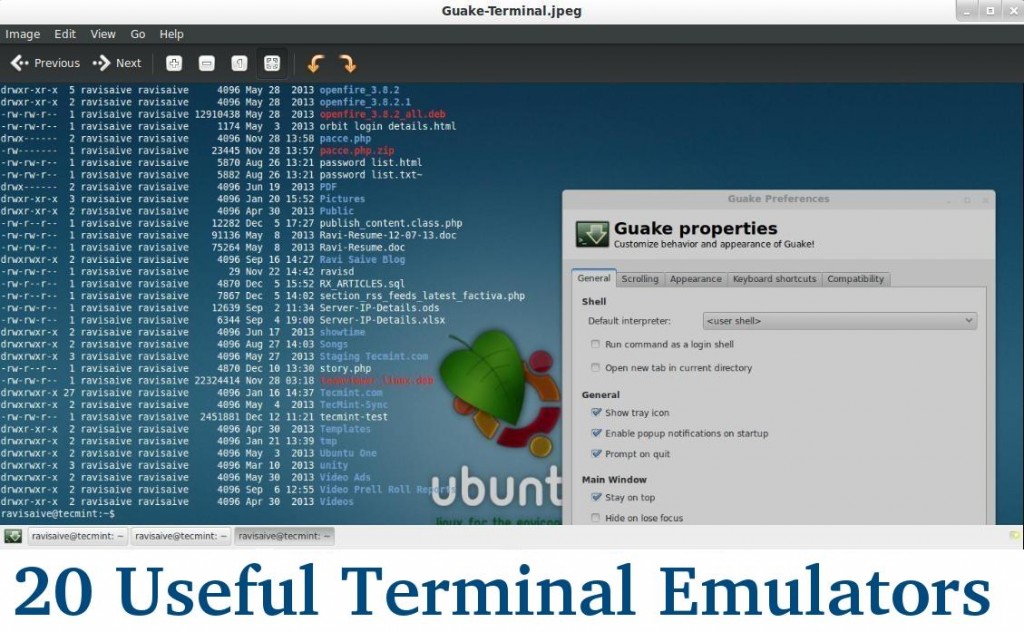
- Windows terminal commands for ending a program how to#
- Windows terminal commands for ending a program series#
- Windows terminal commands for ending a program windows#
Use Ctrl + Mouse Wheel Up/Down to zoom in and out text. The command prompt used to scale pretty poorly and show very small text, but now it's been modernized so you can zoom in just like you do in a web browser. Aside from being able to copy/paste text and tab through directories, you can drag and drop a folder directly into the Command Prompt window to automatically insert the location. Drag and drop folders to insert a directory pathĭirectory paths don't have to be typed in the first place. pressing Ctrl + C will cancel a command that you've already entered and allow you to begin typing another one, while typing cls will clear the current window of any commands that you've entered. Since you might be testing some commands. Our list of tips and tricks below has been organized from briefest and most useful, to more complex and risky.
Windows terminal commands for ending a program windows#
We've compiled a list of things that you can do in the Windows Command Prompt, including some commands everyone should know for general usage, more advanced ones for tweaking or troubleshooting your PC, as well as lesser known and less practical Command Prompt features.
Windows terminal commands for ending a program series#
Sometimes settings can be applied by typing a few characters instead of clicking through a series of menus, while other times there simply isn't any other way to perform an operation except with command lines.
Windows terminal commands for ending a program how to#
* because batch subprocesses often open a second copy of CMD which will run this command again and again, from slowing everything down to other unforseen issues.Although Windows settings provide easy access for configuring most things, the Command Prompt - elevated or otherwise - can be indispensable in a number of scenarios, especially when you know how to take advantage of it. Closing the window with the mouse won't work here. But remember, if you don't explicitly type exit, the history won't be saved. Now you've got all the macros you can eat, and you're saving your command line session each time. Rem copy the current directory to the clipboardĭOSKEY cc=cd^|clip ^& echo %%CD%% copied to clipboard For example: rem review previous command line entries:ĭOSKEY history=notepad %USERPROFILE%\commands.log This allows you to add as many macros as you want to your command session. Then, when any subsequent subprocesses open a command session, they will run into the second line and immediately exit the script! This is because subprocesses automatically inherit the environment variables from the parent process. How does this avoid those unexpected side effects?Īll we're doing is creating an environment variable called AUTOEXEC. Rem remap exit command to save a copy of the command line history to a log before exiting.ĭOSKEY exit=(echo/ ^& echo **** %date% %time% ****) $g$g %USERPROFILE%\commands.log ^& doskey /history $g$g %USERPROFILE%\commands.log ^& ECHO Command history saved, exiting ^& exit $* Here is what you put in the autoexec.bat file: off So yes, this batch file will run every time a CMD session is opened, but we'll do a trick to make sure it doesn't run in any subprocesses. Then change the value of HKEY_LOCAL_MACHINE\SOFTWARE\Microsoft\Command Processor\AutoRun to this: IF EXIST "%USERPROFILE%\autoexec.bat" (CALL "%USERPROFILE%\autoexec.bat") While that will work, it will definitely create unexpected side effects when doing any kind of scripting*.Ĭreate a file called autoexec.bat and store it in your profile folder (e.g., C:\Users\yourname\autoexec.bat). Anything you put in this entry will be run when you start a CMD session.

The short and dangerous answer is to just add it to the REGISTRY in HKEY_LOCAL_MACHINE\SOFTWARE\Microsoft\Command Processor\AutoRun. The tricky part is autoloading that doskey macro when you start a new command session. Unfortunately, you won't be able to easily go back to any of these entries by pressing the up arrow, but you can examine the file at any point to see what you did in the past. This creates a macro that remaps the EXIT command to copy the command line history into your user profile folder (e.g., C:\Users\yourname\commands.log).

This simple macro will save the command line history when you exit a CMD session: doskey exit=(echo/ ^& echo **** %date% %time% ****) $g$g %USERPROFILE%\commands.log ^& doskey /history $g$g %USERPROFILE%\commands.log ^& ECHO Command history saved, exiting ^& exit $*

If all you want to do is save your command line history at the end of every session, here's a simple way to do it:Īs other answers indicated, doskey allows you to list the command line history for the current session.


 0 kommentar(er)
0 kommentar(er)
